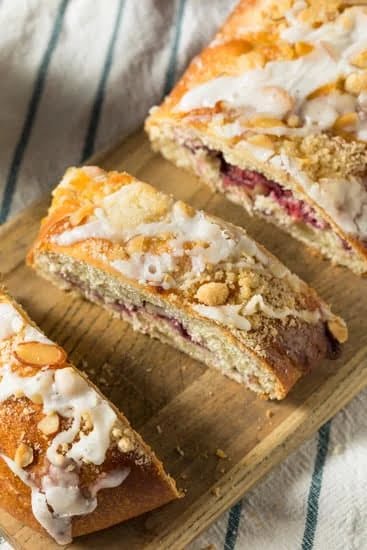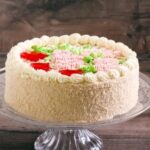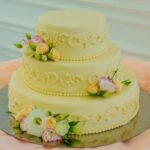The Sacher cake, renowned for its decadent layers of chocolate and apricot, is more than just a delicious dessert. It holds a deep historical and cultural significance that has made it an integral part of Austrian culinary heritage. In this article, we will delve into the fascinating origins of Sacher cake decoration and explore why it has become synonymous with Austrian dessert culture.
Dating back to 1832 in Vienna, Austria, the Sacher cake was created by Franz Sacher for Prince Wenzel von Metternich. It quickly gained popularity and became a beloved treat amongst aristocrats and commoners alike. Today, it is considered one of Austria’s most iconic culinary creations.
But what truly sets the Sacher cake apart is its exquisite decoration. The smooth and flawless icing layer combined with the vibrant apricot glaze adds an element of visual appeal that matches its exquisite taste. Throughout this article, we will guide you through the art of decorating a Sacher cake from start to finish, sharing tips and techniques for achieving professional results.
Whether you’re a novice or seasoned baker, understanding the history and significance behind the artistry of Sacher cake decoration can elevate your baking skills to new heights. Join us as we embark on this journey through time to discover the secrets behind creating a beautifully decorated Sacher cake fit for any occasion.
The Essential Ingredients for Sacher Cake Decoration
The key to a successful Sacher cake decoration lies in using the right ingredients that will not only enhance the flavor but also contribute to the aesthetic appeal of the cake. When it comes to Sacher cake, two essential ingredients stand out: chocolate and apricot. Understanding their significance and how they can be balanced is crucial for achieving the perfect decoration.
Key Components of the Sacher Cake Recipe
To create an authentically delicious Sacher cake, it is imperative to use high-quality dark chocolate. The rich and intense flavor of dark chocolate complements the sweetness of the cake, creating a harmonious taste experience. Cocoa powder is also an important ingredient, lending a deep and robust flavor to both the cake batter and icing.
Another vital component of Sacher cake decoration is apricot jam or preserve. This fruity element adds a touch of brightness and tanginess that cuts through the richness of the chocolate. Authentic recipes call for apricot jam made from ripe, juicy apricots which have been cooked down until they have achieved a smooth texture.
Understanding the Perfect Balance of Chocolate and Apricot Flavors
Achieving the ideal balance between chocolate and apricot flavors is paramount in Sacher cake decoration. The chocolate should be dominant but not overpowering, allowing enough room for the fruity notes of apricot to shine through. The layers should be evenly distributed, ensuring that every bite offers a harmonious blending of flavors.
When applying apricot glaze, it’s essential to do so sparingly as too much can overwhelm the other elements of the cake. The glaze should be thin enough to spread easily but thick enough to create a glossy finish on top.
By selecting premium quality dark chocolate and using just the right amount of apricot jam and glaze, decorators can elevate their Sacher cakes into irresistible masterpieces that captivate both visually and on the palate.
Types of Chocolate for Sacher Cake Decoration
Overview of various chocolate options for decorating the cake
When it comes to Sacher cake decoration, choosing the right type of chocolate is essential. The chocolate not only adds flavor but also plays a significant role in the overall visual appeal of the cake. There are several chocolate options available for decorating Sacher cake, each offering a distinct taste and texture.
One popular choice is dark chocolate, which pairs perfectly with the rich and velvety flavors of the cake. Dark chocolate provides a deep, intense flavor that complements the sweetness of the apricot glaze and balances out the richness of the cake itself. Its slightly bitter undertones create a harmonious contrast that enhances both taste and appearance.
Another option is milk chocolate, which lends a creamier and sweeter taste to the Sacher cake. Milk chocolate has a milder flavor compared to dark chocolate, making it an excellent choice for those who prefer a lighter and smoother experience. It adds a lusciousness to the decoration while still maintaining the classic essence of Sacher cake.
Lastly, white chocolate can be used for those who desire a more delicate and subtle flavor profile. White chocolate brings its unique creaminess and sweetness to the table but without overwhelming other flavors present in the cake. Its light color also creates an elegant contrast against the dark exterior icing layer, resulting in an eye-catching visual display.
Choosing between dark, milk, or white chocolate for different effects
When selecting which type of chocolate to use for Sacher cake decoration, consider not only personal preference but also how it will impact the overall presentation. Dark chocolate tends to create a more sophisticated look with its deep color, making it ideal for formal settings or events. On the other hand, milk or white chocolate can lend a softer and more playful aesthetic that may be better suited for casual gatherings or celebrations.
Additionally, take into account how well each type of chocolate will adhere to the cake and contribute to its texture. Dark chocolate has a higher cocoa content, making it slightly firmer when cooled, which can result in a cleaner and more defined finish. Both milk and white chocolate have a higher fat content, giving them a smoother consistency that can create a more fluid effect when decorating.
Ultimately, the choice between dark, milk, or white chocolate for Sacher cake decoration depends on personal preference and desired aesthetic. Experimenting with different types of chocolate can provide unique and delightful results, allowing you to discover your own signature style when it comes to decorating this beloved Austrian dessert.
Mastering the Art of Icing Sacher Cake
Icing plays a crucial role in creating a visually stunning and luxurious appearance for Sacher cake. The smooth and flawless icing layer not only adds a beautiful finishing touch but also enhances the overall taste and texture of the cake.
Mastering the art of icing Sacher cake requires precision, patience, and attention to detail. In this section, we will provide you with a step-by-step guide on how to achieve that perfect icing layer, as well as some tips and tricks for a professional finish.
Step-by-Step Guide
- Start by preparing your Sacher cake base. Once it has cooled completely, trim off any uneven edges to create a flat surface for the icing.
- Place your cake on a wire rack with a baking tray or parchment paper underneath to catch any excess icing.
- Melt your chosen chocolate (dark, milk, or white) in a heatproof bowl over simmering water or using a microwave, stirring occasionally until smooth.
- Pour the melted chocolate slowly onto the center of the cake, allowing it to spread naturally and cover the top surface first.
- Using an offset spatula or palette knife, gently spread the chocolate over the sides of the cake in smooth strokes. Work quickly but carefully to ensure even coverage.
- Once you have covered the entire cake with icing, use long strokes with your spatula or palette knife to create distinct lines on the sides for that classic Sacher cake look.
Tips and Tricks
- To achieve a perfectly smooth finish, dip your spatula or palette knife in hot water before spreading the icing to help it glide more easily.
- If you want to add a decorative touch, consider using a cake comb or textured scraper to create patterns on the sides of the cake.
- If you notice any air bubbles or imperfections in the icing, gently tap the cake on a counter to help release them or use your spatula to smooth them out.
- Allow the icing to set completely before moving or serving the cake. This will ensure that it stays intact and doesn’t smudge or smear.
With practice and patience, you can master the art of icing Sacher cake like a professional pastry chef. The smooth and flawless icing layer will not only make your cake visually appealing but also add that extra touch of indulgence to this iconic Austrian dessert. Get creative with your techniques and experiment with different designs and patterns to make your Sacher cake truly unique and memorable. Happy decorating.
Apricot Glaze Techniques for Sacher Cake
The apricot glaze is a crucial element in Sacher cake decoration, as it not only adds a burst of flavor but also enhances the visual appeal of the cake. The tangy sweetness of apricots complements the rich chocolatey goodness of the cake, creating a harmonious balance that is beloved by dessert enthusiasts worldwide.
There are several techniques to apply the apricot glaze to achieve optimal taste and texture. One popular method is to brush the glaze onto the cake layers before assembling them. This ensures that each slice of cake has a consistent distribution of apricot flavor throughout. To do this, simply warm the glaze slightly and use a pastry brush to evenly coat each layer with a thin layer of glaze.
Another technique involves pouring the glaze directly over the top of the assembled cake, allowing it to trickle down and envelop the sides. This method creates a glossy finish and intensifies the flavors by providing an extra layer of apricot goodness. To achieve this effect, make sure to prepare a slightly runnier glaze consistency and pour it slowly over the center of the cake, gradually moving outward.
For those who prefer a more concentrated burst of apricot flavor, consider injecting small amounts of warmed glaze into strategic points within the cake layers using a syringe or piping bag fitted with a slender tip. This technique allows for precise control over where exactly you want to infuse intense apricot notes.
Regardless of which technique you choose, it is essential to give the glaze time to set before proceeding with further decoration or serving. This gives it enough time to firm up and retain its vibrant shine on top of your masterpiece.
| Apricot Glaze Techniques | Description |
|---|---|
| Brushing Technique | Apply glaze to individual cake layers using a pastry brush. |
| Pouring Technique | Pour slightly runnier glaze over the assembled cake for a glossy finish. |
| Injecting Technique | Inject small amounts of warmed glaze into strategic points within the cake using a syringe or piping bag fitted with a slender tip. |
Creative Designs and Patterns for Sacher Cake Decoration
When it comes to decorating a Sacher cake, the possibilities are endless. Adding decorative elements not only enhances the visual appeal of the cake but also allows for personalization and creativity. Whether you are a professional baker or a home cook looking to impress your guests, here are some inspiring ideas for incorporating creative designs and patterns into your Sacher cake decoration.
One popular technique is using piping to create intricate designs on the cake’s surface. With different piping tips and a steady hand, you can pipe beautiful borders, delicate flowers, or even personalized messages onto the cake. This method allows for precise control over the design and ensures that each stroke is clean and defined.
Another way to elevate your Sacher cake decoration is by using edible flowers as embellishments. Edible flowers not only add a touch of natural beauty but can also enhance the flavors of the cake. Consider using pansies, lavender blossoms, or rose petals as edible accents that will surely impress your guests.
If you want to take your creativity further, consider incorporating themed designs into your Sacher cake decoration. For example, if you are making a cake for a child’s birthday party, you can decorate it with cartoon characters or use rainbow colors to create a vibrant and fun dessert centerpiece.
| Design/Pattern | Description |
|---|---|
| Floral Garden | Create an enchanting garden scene on top of the Sacher cake by piping delicate flower designs with buttercream icing. Use an assortment of pastel-colored flowers such as roses, daisies, and tulips for a soft and romantic look. |
| Artistic Drip | Add a modern twist to your Sacher cake decoration with an artistic drip design. Melt dark chocolate and let it gently cascade down the sides of the cake, creating a stylish and dramatic effect. Finish off by embellishing the top with edible gold flakes for a touch of luxury. |
| Mirror Glaze Marble | For an eye-catching and mesmerizing decoration, try a mirror glaze marble effect on your Sacher cake. Go for contrasting colors such as black and white or vibrant swirls of red and yellow. The glossy mirror glaze will create a beautiful marble pattern that is sure to impress your guests. |
By exploring different designs and patterns, you can showcase your artistic flair while adding a unique touch to your Sacher cake decoration. Don’t be afraid to experiment and let your creativity shine through as you create a visually stunning dessert masterpiece.
Sacher Cake Decoration for Special Occasions
Sacher Cake is not only a delicious dessert but also a versatile treat that can be customized for special occasions. Whether it’s a birthday, anniversary, or wedding, adding a personal touch to the decoration of your Sacher cake can make it even more memorable. Here are some tips and ideas for creating unique and festive designs for special occasions.
Tailoring the Decoration
When decorating a Sacher cake for a special occasion, it’s important to consider the theme or purpose of the event. For example, if it’s a birthday celebration, you can personalize the cake with the name or age of the birthday person using decorative icing or chocolate letters. For weddings, you can incorporate elements like delicate sugar flowers or edible pearls to match the overall wedding decor.
Personalized Messages
Adding personalized messages on top of your Sacher cake can create a heartfelt touch. You can write a special message using piping techniques with contrasting colored icing or use edible ink markers to write directly on the cake. This allows you to convey your wishes and sentiments in a visually appealing way.
Themed Designs
If you’re planning a themed party or event, why not extend that theme to your Sacher cake decoration? For example, if it’s a Hawaiian luau party, you can decorate the cake with tropical fruits like passion fruit slices and pineapple chunks along with colorful floral decorations made of icing. By incorporating elements from your chosen theme into the design of your Sacher cake, you create an immersive experience for your guests.
Remember that when decorating Sacher cakes for special occasions, balance is key. It’s important not to overpower the flavors of the original recipe while adding decorative elements. The goal is to enhance both visual appeal and taste without overshadowing what makes Sacher cake so beloved.
By tailoring the decoration and incorporating personalized messages or themed designs, you can elevate your Sacher cake to a whole new level for any special occasion. Let your creativity shine and make each celebration even more memorable with your customized Sacher cake decoration.
Troubleshooting Common Decoration Challenges
Decorating a Sacher cake can be a delightful and rewarding experience, but it can also come with its fair share of challenges. Whether you’re a novice baker or an experienced pastry chef, it’s important to be prepared for any mishaps that may occur during the decoration process. In this section, we will address some common decoration challenges and provide quick fixes and expert advice to help you overcome them.
One of the most frustrating issues that can arise when decorating a Sacher cake is smudged icing. It can happen when applying the icing too soon after baking, causing it to melt and blur. To avoid this problem, make sure that your cake is completely cooled before attempting to add the icing layer.
Additionally, chilling the cake in the refrigerator for about an hour prior to icing can help create a firm surface for the icing to adhere to. If you still encounter smudging, gently scrape off the melted layer and reapply a fresh one.
Another common challenge is achieving consistency in the apricot glaze. Sometimes, the glaze may become too thick or too runny, making it difficult to apply evenly on the cake’s surface. If your glaze is too thick, simply add a little warm water or apricot liqueur and stir until you achieve a smooth and pourable consistency.
On the other hand, if your glaze is too runny, try reducing it over low heat in a saucepan until it thickens slightly. Be sure not to overcook it as this could result in a burnt taste.
If you find yourself struggling with uneven texture or air bubbles in your icing or glaze, there are simple techniques that can help achieve a smooth finish. For icing, using an offset spatula or bench scraper can help spread it evenly across the cake’s surface.
Apply gentle pressure and use long strokes for best results. As for glazing, pouring the apricot glaze in the center of the cake and using a pastry brush to spread it towards the edges can help create a uniform coating.
By being aware of these common challenges and armed with solutions, you’ll be better equipped to tackle any decoration mishaps that may occur while preparing your Sacher cake. Remember, practice makes perfect, and every mistake is an opportunity for growth and improvement. So don’t be discouraged if things don’t turn out perfectly the first time – with patience, perseverance, and a touch of creativity, you’ll soon become a master at troubleshooting and creating beautifully decorated Sacher cakes.
Elevating Sacher Cake Presentation
When it comes to Sacher cake decoration, presentation is key. Elevating the overall look of the cake not only adds to its visual appeal, but also enhances the dining experience. In this section, we will explore some styling and plating ideas that will make your Sacher cake truly captivating.
One idea for elevating Sacher cake presentation is to consider the shape and size of the cake itself. While the traditional round shape is iconic, you can also experiment with square or rectangular shapes for a modern twist. Additionally, consider layering multiple smaller cakes to create a stunning tiered effect. This can be particularly impressive for special occasions like weddings or anniversaries.
Another way to elevate the presentation of your Sacher cake is through complementary elements. Consider adding a scoop of homemade vanilla ice cream or a dollop of lightly whipped cream alongside each slice. This contrasting combination of warm cake and cold accompaniments not only adds texture variation but also creates a delightful contrast in flavors.
Furthermore, don’t be afraid to play with colors and textures when plating your Sacher cake. Opt for vibrant fruits such as strawberries or raspberries to add pops of color to the plate. You can also garnish with chocolate shavings or edible flowers for an extra touch of elegance.
By taking into consideration the shape and size, adding complementary elements, and playing with colors and textures, you can elevate the presentation of your Sacher cake to create an irresistible dessert tableau. Remember that presentation is an opportunity for artistic expression and personalization. So have fun experimenting with different plating ideas that not only make your Sacher cake visually appealing but also showcase your creativity and attention to detail.
Conclusion
In conclusion, the art of Sacher cake decoration is a celebration of both history and creativity. Throughout this article, we have delved into the origins and cultural significance of this iconic Austrian dessert. We have also explored the essential ingredients, chocolate options, icing techniques, and apricot glaze applications that contribute to the perfect Sacher cake. Furthermore, we have discussed various creative designs and patterns, along with tips for tailoring the decoration to suit special occasions.
The artistry of Sacher cake decoration allows for endless possibilities. From intricate piping techniques to incorporating edible flowers or personalized messages, there are numerous ways to create a visually stunning cake that is as delicious as it is beautiful. It is an opportunity for individuals to showcase their own artistic touch and express their creativity in a unique and edible form.
Whether you are a seasoned baker or just starting out, exploring the art of Sacher cake decoration can be an exciting and rewarding experience. By mastering the techniques outlined in this article and experimenting with your own ideas, you can create a masterpiece that will awe both your loved ones and guests at special events.
Frequently Asked Questions
What does Sacher mean in German?
In German, the word “Sacher” refers to someone or something that is from or related to the city of Vienna, Austria. It can be used as an adjective or a noun, and it is derived from the name of its founder, Franz Sacher.
Why is it called a Sachertorte?
The Sachertorte is named after its creator, Franz Sacher. In 1832, at the age of 16, Franz Sacher was assigned to make a dessert for Prince Wenzel von Metternich in Vienna.
When faced with limited ingredients due to his father’s absence, he created a rich chocolate cake filled with apricot jam and covered with chocolate icing. This dessert became known as the Sachertorte, establishing itself as an iconic Viennese treat.
Why is the Sachertorte so famous?
The Sachertorte gained fame due to its exceptional taste and historical significance. It became an integral part of Viennese cuisine and culture over the years, serving as a symbol of Austrian heritage and culinary excellence. Its unique combination of flavors – from the decadent chocolate cake to the tangy apricot jam – creates a harmonious balance that pleases many palates.
Additionally, its reputation has been fostered by confectioneries such as Hotel Sacher in Vienna, which has upheld strict standards for baking this iconic cake since the late 19th century. As a result, tourists and locals alike continue to seek out this beloved Austrian delicacy, contributing to its enduring fame worldwide.

Welcome to our cake decorating blog! My name is Destiny Flores, and I am the proud owner of a cake decorating business named Cake Karma. Our mission is to provide delicious, beautiful cakes for all occasions. We specialize in creating custom cakes that are tailored specifically to each customer’s individual needs and tastes.





